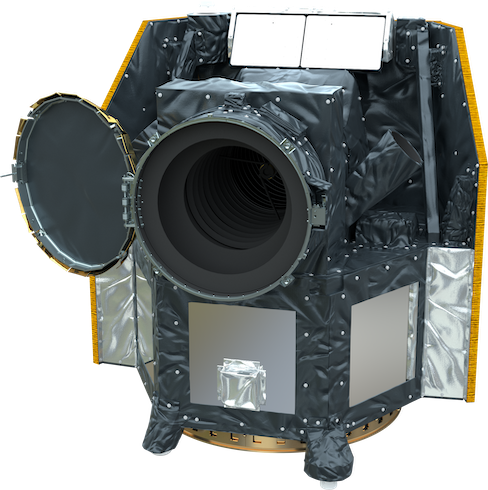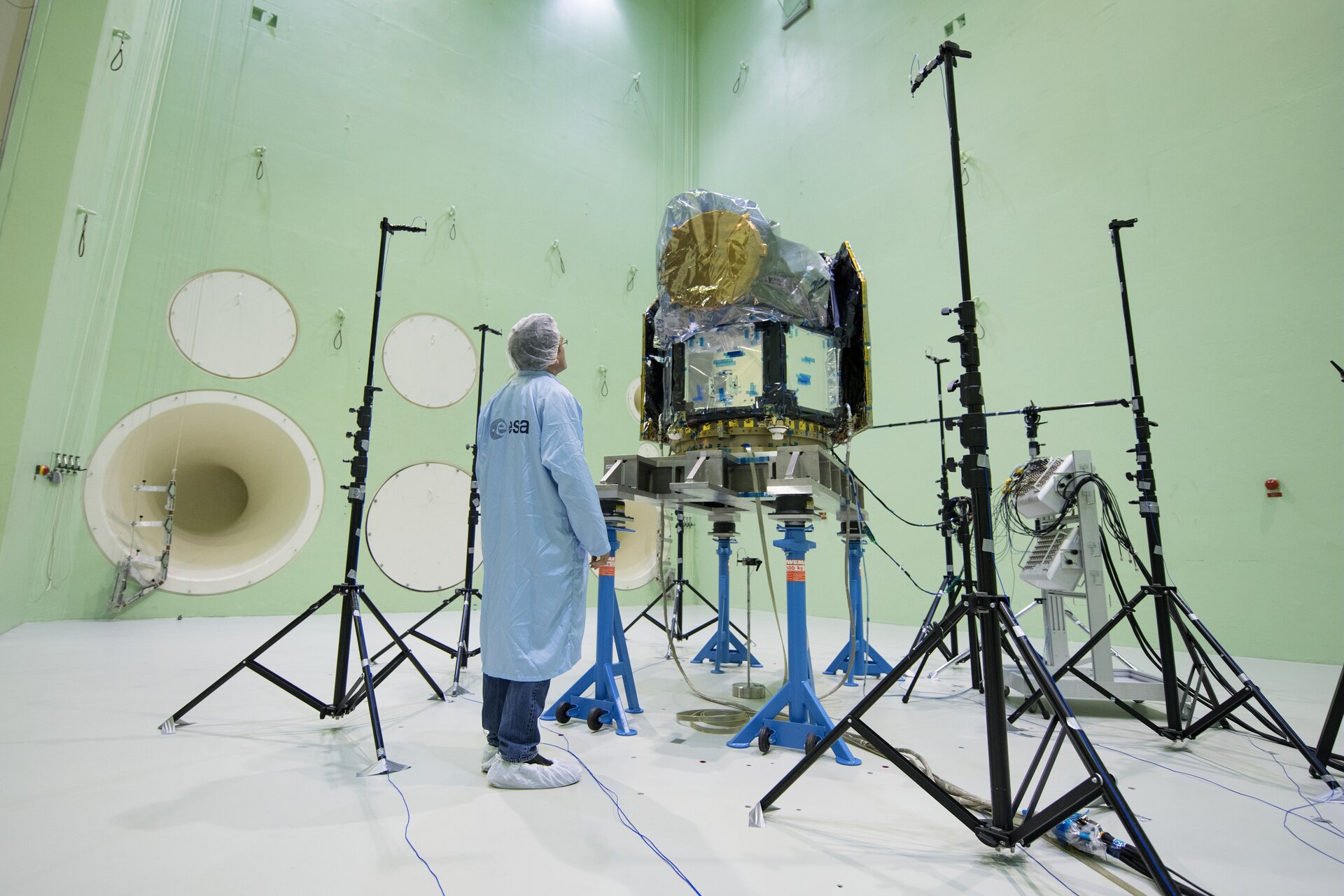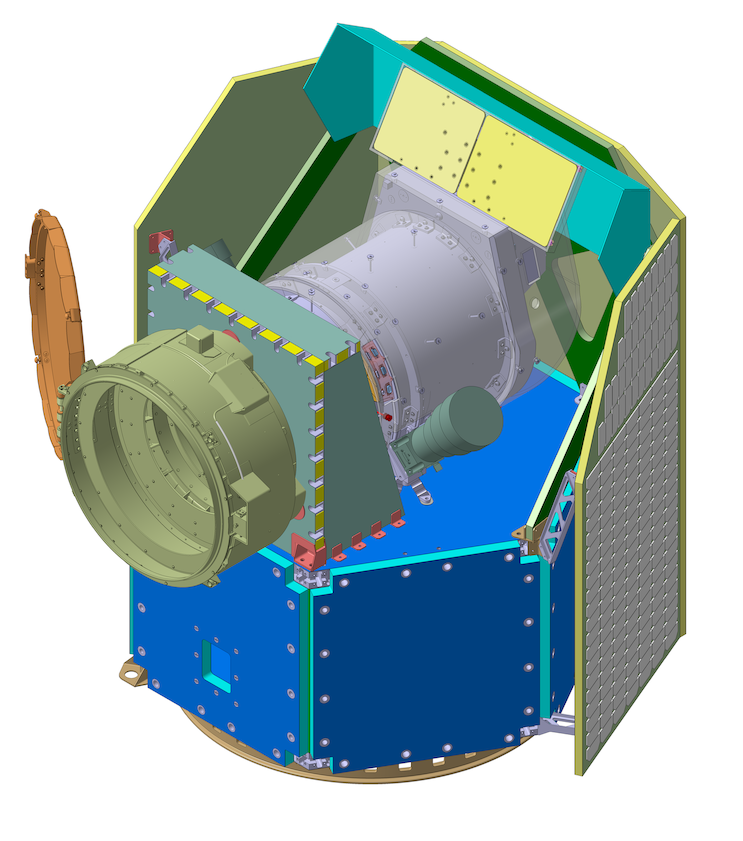Spacecraft - CHEOPS
Spacecraft
|
The CHEOPS spacecraft was built by Airbus Defence and Space (ADS) Spain (ASE) and is based on the AS-250 platform, which has been used previously for small and medium-size missions operating in Low Earth Orbit. The spacecraft configuration is characterised by a compact, hexagonal-prismatic shaped platform body, with a volume and wet-mass of approximately 1.5 m (height) x 1.6 m x 1.6 m (footprint) and 290 kg respectively. Solar arrays are body-mounted, and also acting as a fixed sun shield which ensures that the instrument and its radiators are in the shade for all nominal pointing directions within a half-cone of 60 degrees centred around the anti-Sun direction.
|
CHEOPS Spacecraft (Artist Illustration) |
|
CHEOPS Structural Model at ESTC in the Large European Acoustic Test Facility (LEAF) at ESTEC (Copyright/credit: ESA/G-Porter) |
The satellite has been designed to be compatible with the launch environments of a number of different launch vehicles, including Falcon-9, Soyuz (under the ASAP-S adapter) or VEGA (under the VESPA adapter). The key avionics units (On-Board Computer, Remote Interface Unit, Power Control and Distribution Unit) as well as the On-Board Control Software have been inherited from the AS-250 product line. The Attitude and Orbit Control Sysmste (AOCS) equiment is also based on that from the AS-250, with scaled-down reaction wheels and magneto-torquers, and without a Coarse Sun Sensor or GPS. Two Hydra star trackers provided by Sodern (FR) are installed directly on the instrument Optical Telescope Assembly in order to minimise misalignment with the instrument Line-of-Sight due to thermo-elastic distortion. Electrical power is provided by 3G30 solar cells (Leonardo, IT) which are installed in 3 arrays, in turn mounted as one central and two lateral panels, that cover a total geometric area of about 2.5 m2 and generate a total of approximately 200 W electrical power in nominal operating mode. |
|
The spacecraft includes a mono-propellant Propulsion Module (PM) built by Airbus Safran Launchers (DE), comprising a Hydrazine tank with a capacity of 30 litres (Rafael, IL), with four 1N thrusters and associated piping and valves. The mechanical interfaces has been designed to ensure maximum decoupling between the PM and the rest of the S/C. The tank is sized to provide a total delta-V in excess of 110 m/s as required to perform the launcher dispersion correction manouevre during Launch and Early Operations, collision avoidance manoeuvres and final de-orbiting at the end of the operational phase of the mission as called for by current space debris mitigation requirements. Communication between the spacecraft and ground is based on a redundant S-band transceiver (Honeywell, formerly COM DEV UK), with 2 transmitter antennas and 2 receiver antennas located respectively at the +Z and -Z ends of the spacecraft. |
CHEOPS satellite CAD |
Curious to learn more?
Further details on the CHEOPS spacecraft can be found at CHEOPS Consortium Mission website (http://cheops.unibe.ch) and in the references at this link.
- Removed a total of (6) style text-align:center;
- Removed a total of (1) style margin:0;
- Removed a total of (3) border attribute.
- Removed a total of (3) cellpadding attribute.
- Removed a total of (3) cellspacing attribute.
This website was last updated on 25 March 2025.








































 Sign in
Sign in
 Science & Technology
Science & Technology


